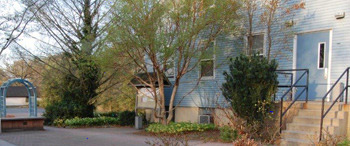Adequate April showers combined with seasonally appropriate temperature has provided early May with a very nice assortment of spring blooming plants. Although rather chilly for those looking forward to those summer days of 90 degrees, the cool weather will allow spring blooms to last and to be enjoyed to their fullest! May is always a hectic month, so take the time to make notes in your journal and take long evening strolls to smell and enjoy the fruits of your efforts.
Things to do:
- Prune leggy Azaleas and Rhododendrons as they finish blooming. This will improve the habit or shape of the plant while still ensuring flower bud development for next year.
- By late May it will be clearly evident which parts of a plant – if not the whole plant – has died back from winters chill and snowpack. Always check the base of the stems to see if mice have girdled any stems, often a problem when the snowpack has persisted for a long period of time.
- If you have fertile soils, some perennials such as New York and New England Asters as well as the taller Sedums should be pinched in mid to late May to prevent them from flopping later in the season.
- Some plants such as Bloodroot (Sanguinaria canadensis) can be easily sown in the garden by seed. Look under the foliage for the seed pods (pictured at right) and lightly squeeze the pod. If it splits open, the seeds are rip and spread them close to where you would like to add some plants. I say close since the seeds are moved about by ants, so the planting will take on a very naturalistic appearance, based upon where the ants finally drop the seeds! Other plants such as Winter Aconites (Eranthis) have seed that is dispersed out of the open, cup-shaped seed capsules by wind. As the plants rock back and forth, the seed is tossed a short distance from the capsules (as seen in the 2nd picture at right) and they will germinate the following spring. Longwood Gardens has found distributing the plant by seed to be a far more successful method of spreading the plants about than the typical method of installing the tubers in the fall.
- Let bulb foliage turn yellow or tan before removing to ensure proper bulb and flower development for next year. Do not tie it together or braid it, since that reduces that amount of surface area exposed to the sun and its ability to make both sugars and next year’s embryonic flowers.
- For bulbs such as Eranthis (Winter Aconite) and Galanthus (Snowdrops), dig and divide existing clumps as you will have far more successful results replanting the geophytes (plants with an underground storage organ, like a bulb or a corm) than planting newly purchased ‘bulbs’ in the fall!
- If your Narcissus (Daffodils) failed to bloom this year, it may be they are planted too shallow for the bulb to grow to the proper size to bloom. Dig them in late May (as pictured at right), tease apart the clump into several smaller clumps and replant around 6” deep. In the clump pictured at right, notice the small bulb size of the one pulled down lower, far too small to yield a flower!
- For a neat garden, edge those bedlines and compost the remnants!
- Always make certain the soil has drained adequately before working it, as disturbing the soil while too wet will destroy the soil structure. If you can make the soil into a baseball, it is probably too moist!
- For vegetable gardens, use a broadfork to gently loosen and aerate the soil. A broadfork has 3-5 sharp tines that penetrate into the soil with two 5’ long handles (as pictured at right). By using your body weight against the handles and rocking back and forth, the soil is loosened but not disrupted. Tilling the soil damages both the earthworms who help aerate the soil and beneficial fungus, which assist the vegetables in obtaining nutrients and water. Current research shows that the fungus also produce and transfer the amino acid Ergothioneine to vegetables. Ergothioneine is an antioxidant with anti-inflammatory properties that has been shown to battle chronic illness and allow people to live longer. You have to love fungus! Get the soil for Vegetable Gardens tested for nutrients and pH level if it has not be tested in a couple of years.
- If you are looking to ease into growing vegetables or you only have a deck, plant your cool season crops in containers. They are both ornamental and delicious (bottom picture on right)!
- Thin those cool season vegetables like beets that were directly sown during April. Thinning will allow them to develop more fully and the greens from the thinned beets can be added to salads!
- Start to plant frost tender vegetables. For the eager, the wall of water can be used for tomatoes and other tender vegetables that are planted during the potentially cold first half of the month, although there is no harm in waiting until early June! In fact, adding a second planting of tomatoes in early to mid-June will help to ensure tomato harvest through September.
- Plant out tender annuals after the last frost-free date in your part of the state (generally May 15th, but frosts can occur later). Temperatures in May can fluctuate from 90° one day to 30° the next! Also, certain annuals that like it warm, such as Catharanthus (the annual Vinca) and ornamental Sweet Potato Vines should not be planted until late May or early June for best results.
- Remove the Banana and Cana roots from the basement and plant them in a sunny location in soils that are enriched with compost to help hold moisture.
- The Colocasia and Alocasia roots or potted plants can be planted out in early May. They are surprisingly tolerant of cooler temperatures when young.
- Pot up the Dahlia tubers or plant them directly in the soil come late May.
- Cut those lawns. Remember, 2 ½ – 3” length is far healthier for the turf than a 2” cut. Do not remove the clippings unless they are exceptionally thick, since they release nitrogen back into the soil as they break down.
- Spot treat for dandelions or any other aggressive lawn weed.
- Finish mulching perennial or shrub borders during the early part of May and start to weed! Remember the average weed seed’s life is 7 years, so remove those weeds before they go to seed.
- Frequently visit local garden centers as new additions are coming in weekly.
- Read the notes that you made this winter and last May and reflect on how to improve the garden. It is now time to put your thoughts into action!
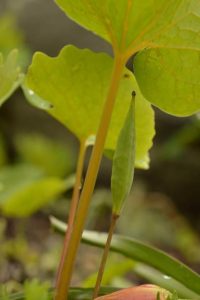
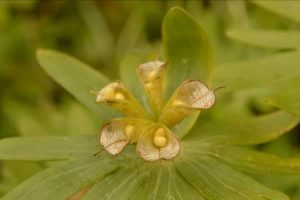
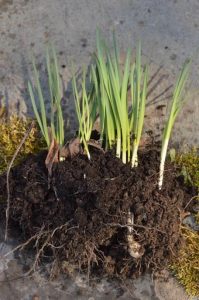
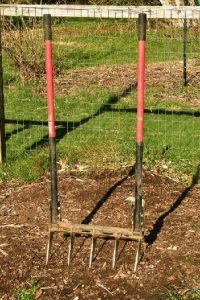
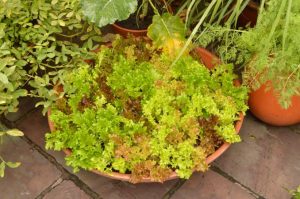
Bruce Crawford
State Program Leader in Home and Public Horticulture (NJAES)


